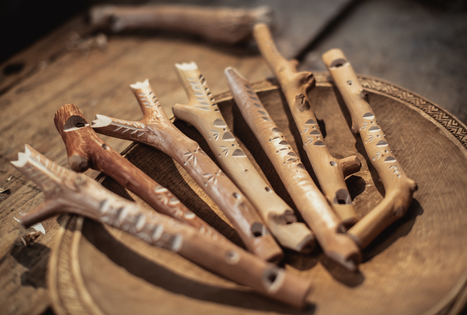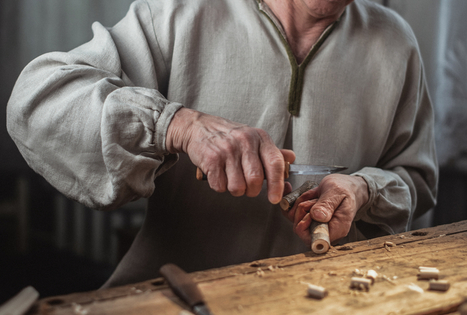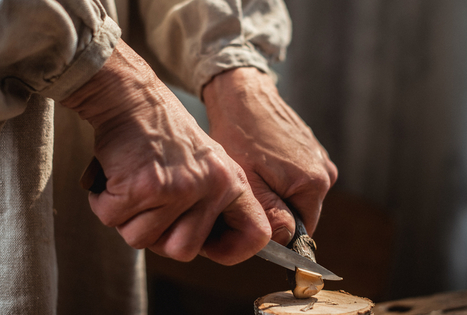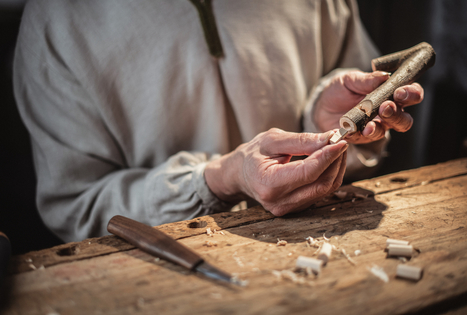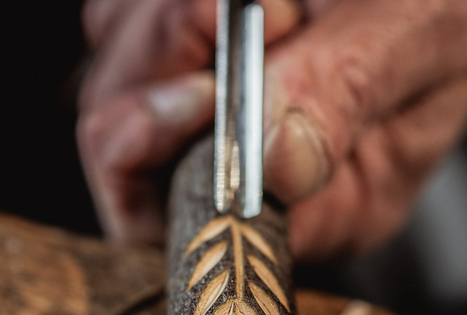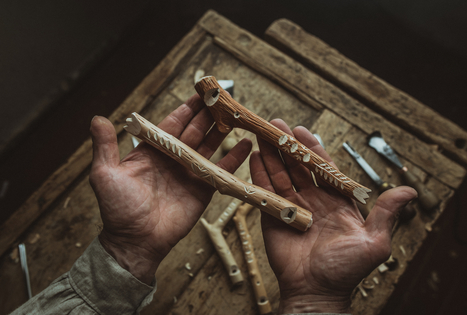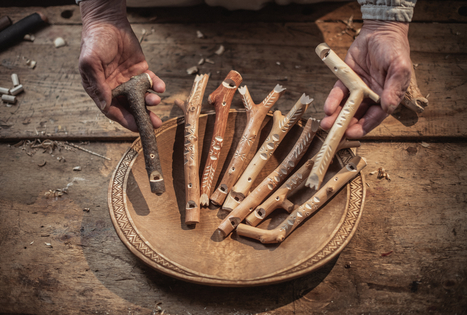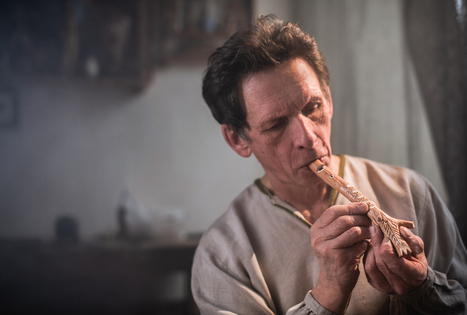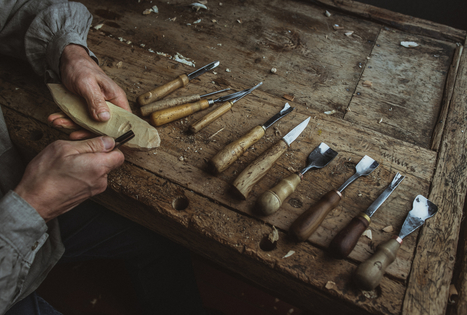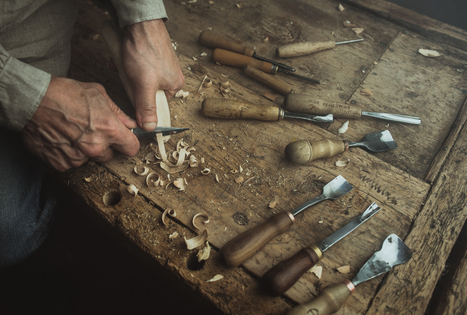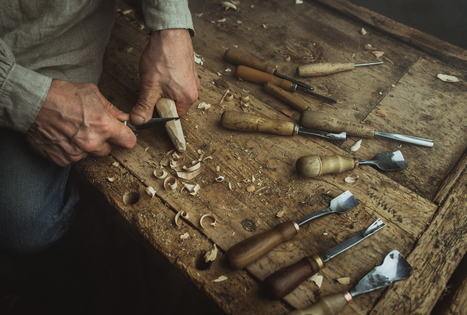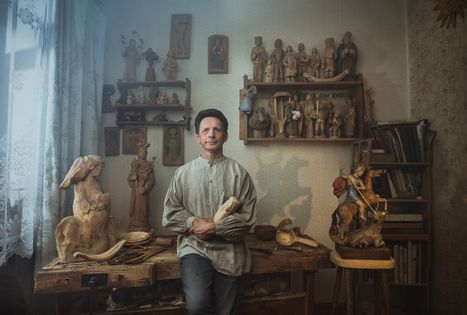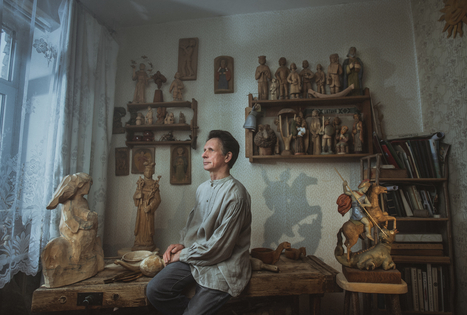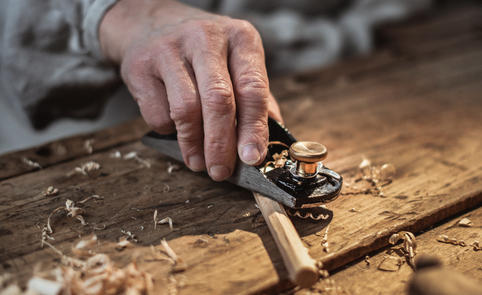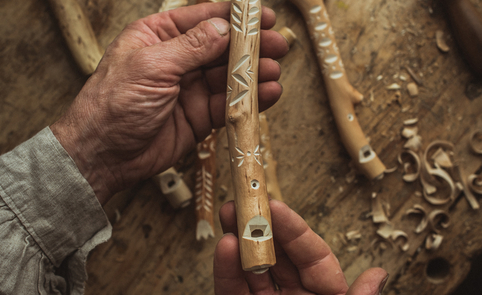The first musical instrument was the human voice. When people wanted more than their voices could produce, they began to create musical instruments.
Beginnings that go back to prehistoric times
Historians believe that the first musical instruments appeared in prehistoric times, along with tools for work. You can find stories about different instruments in the mythologies of different civilisations.
In the 20th century, ancient musical instruments were excavated in the Sumerian city of Ur. These included lyres, harps, flutes, sistra and cymbals. The production of these instruments has been dated to 2600-2500 BC.
It is generally held that the first musical instruments were percussion. At first, these were stones that were struck with other stones or sticks made of bone or wood to form a rhythm. People began making drums around 9000 BC. These were hollow wooden, metal or clay cylinders with animal skin stretched over them. One of the first string instruments is considered to be the bow, which was not only used to shoot, but also to play. A bit later, flutes appeared as well – hollow shafts of bamboo with a few finger holes.
Links to Europe accelerated the spread
The oldest musical instruments found in the ethnic territory of Lithuania were bone whistles, bone and ceramic ūkai (a free aerophone threaded with a cord and spun to make a sound), ceramic rattles, clay whistles, “rider sticks” (a metal stick rattle used as a signal instrument), and Jew’s harps from the Neolithic period, the Bronze Age and later eras. Musical jewellery/pendants have been discovered from the Neolithic period.
Art monuments have been found featuring scenes depicting hunting horns or various string instruments, such as fiddles, lutes and violas. Ancient musical instruments used for rituals, magic, the cult of the dead and work were particularly unique.
The main Lithuanian folk instruments
Lithuanians made different wind instruments from the bark and trunks of tree. Some of the most popular ones include the birbynė (a single- or double-reeded aerophone), the daudytė (birch trumpet), the lamzdelis (bark pipe), and skudučiai (pan flutes).
Also made of wood are the skrabalai, a traditional percussion instrument consisting of wooden bells. Shepherds used this instrument in days gone by to find their animals – when the skrabalai is moved, a clapper knocks on the wall of the trough, emitting a muffled sound.
Traditional kanklės (a plucked string instrument) are made from hardwood and spruce. The strings are now steel, but they used to be made of tendons. This instrument belongs to the Baltic psaltery, a family of related plucked box zithers historically found in the Baltic region.
Clay whistles are very popular among Lithuanians, and are also used as toys. They are decorated with various drawings – usually animal images. The oldest clay whistles that have been found date back to the 17th century.
The manufacture of musical instruments today
Musical instruments used to be made and repaired by the musicians themselves – usually ones who knew blacksmithing, carpentry or another craft. They would begin by fixing their own instruments, and gradually became specialists.
There are currently six certified musical instrument makers in Lithuania who mainly produce Lithuanian folk instruments – kanklės, cimbaloms, pan flutes, birbynės and Jew’s harps.

